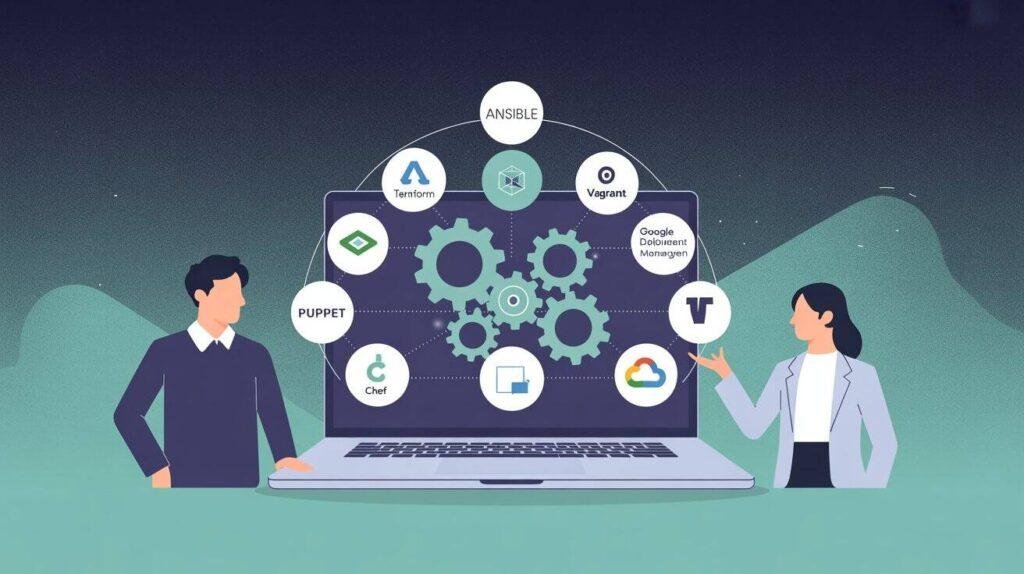Technology is evolving rapidly, and associations need dependable ways to manage complex systems. Infrastructure as Code platforms offer that trustworthiness. They help teams replace homemade setups with automated, harmonious environments. This shift reduces errors and saves time. Importantly, it also helps businesses scale quickly. Through automation, these platforms allow inventors to concentrate on invention rather than repetitive configuration. Also, they make structure changes trackable, unremarkable, and transparent. As a result, collaboration between teams becomes much easier.
Understanding Infrastructure as Code
Infrastructure as Code, frequently called IaC, means managing code with structure rather than physical processes. In simple terms, it brings the benefits of software development to system operation. Also, it ensures that the same terrain can be recreated anytime. With IaC, masterminds can define servers, networks, and databases through configuration files. These lines act as the design for the entire structure. Accordingly, changes are easier to test, review, and roll back if necessary.
Popular Infrastructure as Code Platforms
Several infrastructure-as-code platforms stand out in the industry. The following are some tools, and each platform has its strengths, but all aim to simplify resource operation:

- Chef: An automation tool using Ruby, grounded in fashion, for server configuration and operation.
- Poppet: Declarative configuration operation, strong for large-scale system automation.
- Ansible: Agentless tool with YAML playbooks, easy for configuration, deployment, and symmetry.
- Terraform: Platform-agnostic IaC tool for provisioning cloud and on-ground infrastructure.
- Vagrant: Simplifies VM setup and operation for development environments.
- Azure Resource Manager( ARM): Native Microsoft service for managing Azure resources via templates.
- Google Cloud Deployment Manager GCP: A Service for defining and automating cloud resources.
- Kubernetes: Orchestrates containerized operations, automating scaling, deployment, and operation.
- AWS Cloud Development Kit( CDK): Structure defined in programming languages, deployed via AWS CloudFormation.
- Salt( SaltStack): Event-driven robotization and configuration operation with high scalability.
- Pulumi: Modern IaC using general-purpose languages( TypeScript, Python, Go, etc.) for cloud structure.
Is Kubernetes Infrastructure as Code?
A common question that arises is whether Kubernetes is infrastructure as code. Kubernetes manages containerized operations, but it also acts like a structure tool. While it wasn’t initially designed as IaC, many consider it part of the ecosystem. Kubernetes manifests, written in YAML, describe how operations and clusters should be. In that sense, Kubernetes resembles other IaC practices. Therefore, it plays a precious part in ultramodern infrastructure robotization.
Kubernetes Infrastructure as Code
Kubernetes infrastructure brings scalability and adaptability to the native operations. By defining cluster countries in AWS teams, organizations can ensure that ICT-related issues are effectively addressed. Also, inventors can roll out changes with confidence. Because Kubernetes integrates fluently with other IaC tools, associations gain inflexibility. They can automate deployments, scale offers, and maintain high availability. This combination reduces time-out and enhances operational performance.
Infrastructure as Code AWS
Numerous businesses rely on Amazon Web Services, so structured AWS results are in high demand. AWS CloudFormation is the native option, offering seamless integration with all AWS services. Using the law, masterminds can define and implement complex systems across regions. Likewise, AWS provides templates to help developers start nappily. These features make IaC on AWS both important and accessible.
Infrastructure as Code DevSecOps
Security is a major concern, and infrastructure as code DevSecOps addresses this challenge. By embedding security checks into the code pipelines, risks are reduced early. This approach ensures that vulnerabilities are caught before reaching the product. For illustration, programs can help identify misconfigured storage pools or unauthorized network access. In addition, automated scanning tools give real-time cautions. Accordingly, DevSecOps and IaC together promote safer digital surroundings.
Infrastructure for Machine Learning
As artificial intelligence grows, the infrastructure for ML requires scalability and thickness. IaC plays a central part then as well. Data scientists can define training surroundings with aw, ensuring reproducibility of trials. Also, an automated structure reduces setup delays. Brigades can emplace GPU clusters or storehouse systems quickly and reliably. This effectiveness accelerates the entire machine learning workflow.
Another area worth mentioning is converged infrastructure. It integrates compute, storage, and networking into unified systems. When paired with IaC, managing these f tors becomes far easier. Rather than handling each resource independently, masterminds can achieve complete results with minimum trouble. Likewise, updates and patches are applied constantly across the system. This harmony streamlines IT operations and lowers costs
Benefits of Using IaC Platforms
Infrastructure as Code platforms have several important benefits. They exclude repetitive homemade tasks, which reduces time and improves efficiency. Teams can seamlessly scale resources up or down, supporting business growth without added complexity. IaC also enhances collaboration by allowing developers and operations teams to work on shared, version-controlled configurations. In addition, disaster recovery becomes brisk since rollbacks are automated and dependable. Another crucial benefit is built-in documentation, since the code itself defines the infrastructure. Altogether, these advantages promote agility, reduce costs, and help organizations build flexible, ready-to-use technology systems.
Challenges and Best Practices of IaC Adoption
While IaC brings numerous benefits, challenges remain. The literacy curve can be steep for newcomers, and poor practices may lead to misconfigurations. In addition, integrating multiple platforms can introduce complexity. Security remains a concern, particularly in cloud-heavy atmospheres. Despite these challenges, careful planning and training can effectively minimize pitfalls.
Successful IaC relinquishment requires stylish practices. Version control for configuration lines is essential. Testing changes in safe surroundings helps avoid disasters. Brigades should also apply peer reviews, icing quality, and security. In addition, harmonious picking conventions and modular designs simplify long-term conservation. Following these practices leads to smoother IaC operations.
Future of Infrastructure as Code Platforms
The future of infrastructure as law looks promising. As robotization advances, IaC platforms will become smarter and further intuitive. They may soon incorporate artificial intelligence for optimized resource operation. Likewise, tighter integration with DevSecOps and machine literacy structure is anticipated. Accordingly, associations will witness brisk, safer, and more dependable deployments. The part of IaC will only continue to expand.
In conclusion, Infrastructure as Code platforms are transforming modern IT operations. They bring robotization, thickness, and collaboration to complex surroundings. From Kubernetes to AWS and DevSecOps, their impact is inarguable. Although challenges remain, the benefits outweigh them. With the right practices, associations can embrace this technology confidently. Eventually, IaC represents not just a trend, but the future of structured operation.

